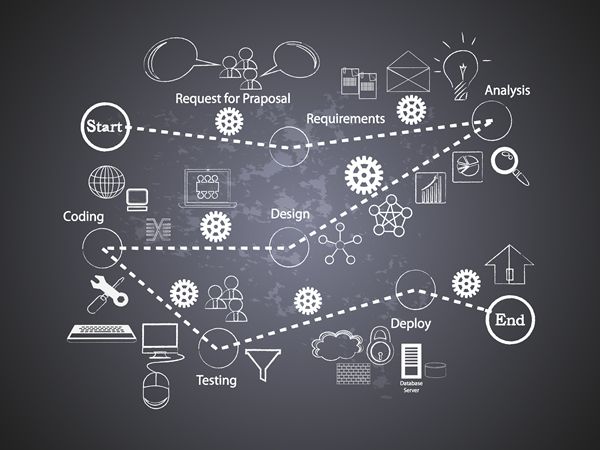Writing website proposals is boring. There are no two ways about it, but they’re a necessary evil. The proposal is the final push before our client signs on the dotted line. We need to make sure we have all our bases covered and that we project, as always, an image of professionalism.
Whether you intend to create your website proposals in Word, Indesign, or use an online service to help you out, it is important that you know what you’re doing.

Image Source: Proposal via Shutterstock.
Company Information
This refers as much to your company as to theirs. Include your contact information in a concise, unobtrusive manner. This can be placed in the footer if you like, but I also recommend that you include it in full on the front page. Make sure your proposal is made out to a specific person, with a name. A proposal to “The Marketing Department” is more of a long shot than a proposal.
Project Overview: Research your client
The hopes and dreams of your client. What does your client expect to get from this website, what are their objectives and goals? Here is where we let the client know that we understand what they need, and where they want to go with this project. This can be a brief paragraph setting the scene.
The Client’s Problem
Usually a client comes to you with a problem. Whether that problem is the lack of a website, or that their landing page has a bounce rate of 90%. We need to identify their problem and address it. Here we make a list of all the problems our client is facing. Explain to them that they can find your killer solutions below the list. Short and sweet.
- Site design is outdated.
- Contact form no longer works.
- Gallery is impractical both to use and update.
- Site was designed using tables and has no CMS.
- Home page has a bounce rate of 90%
- Etc.
Project Solutions: Research your solutions
All the above negativity has to be counter balanced with blinding positivity and clear solutions. For example our client has a very old website that is in desperate need of an overhaul…so instead of saying:
Macintosh Clothing needs their website redesigned. It’s 6 years old, looks very old school, and not in a good way. It needs something funky for todays youthful market…
Try a different approach. The fact that the site is 6 years old makes for many problems, that should be addressed individually. What will a redesign do for Macintosh Clothing? Apart form aesthetics, why should they update their site? Try something along the lines of:
Macintosh Clothing is finding that technology has passed them by, and with it the search engines. The website was built using technologies no longer relevant to today’s modern broswers. The Macintosh Clothing site was built using tables. This creates problems with search engines, while also making updates a laborious task. Any updates to such an antiquated system can be a long, costly affair. Google reads web sites in the order in which the HTML is written, therefore tables can result in…
You could, and probably should, spend a good few paragraphs outlining your solutions. It’s a pain but we can’t afford to be wishy washy. This is where our previous client research pays off. Let’s not forget, all that information we got from our project planner wasn’t just to make us appear conscientious.
Other Considerations
Sometimes there are items that are not necessarily requested but are good to mention anyway. You may even make an extra sale! For example if you offer hosting, now is the time to mention it. If you offer logo design, now is the time to mention it. It’s up to you if you want to discuss pricing here, or save it until the final costing estimate.
I offer maintenance plans to all my customers, some take it, some don’t. I let them know what the package includes, and inform them that they can find prices at the end of my proposal.
Development Timeline
How long will everything take? There’s a lot to take into account: Research, Wireframes, Sitemap design, Initial Designs, Design Revision, Design Approval, Coded, CMS and configuration, Testing & Debugging, Client Testing, Setup, We’re live!

Image Source: Life Cycle Icon Collection via Shutterstock.
How you lay this out is up to you. Some use graphs, some text, but make it easy to read and don’t forget to inform the client that all times are approximate. It takes two to tango, if your client isn’t fulfilling their side of the deal then it’s impossible for you to deliver on time. Make sure you have this stipulated in your agreement/contract.
Costing Estimate
Ideally this should be laid out in table format, making it easy to scan. The client can see what each item costs without the need to dig. Let them know why they’re paying 3.000€, tell them what’s involved etc. It’s also handy to add any common items that haven’t been requested…just incase.
The client should know, that if further down the road they decide to ask for extras then it will cost them X. Again, we need to be clear with our pricing structure. There can be no room for misunderstandings.
It’s also a good thing to include your pricing schedule. Most designers use a milestone system. I usually request 30% upon the signing of our agreement, another 30% upon approval of the initial designs, and the remaining 40% before handing the site over to the client. Some people ask for 50% up front. Go with what feels comfortable. Make sure you do get a deposit. Any client who refuses to pay upfront for your services is not worth working with. You can almost guarantee problems.
Again you can use a graph, illustration or simple plain text to let your client know your payment schedule. Make sure they are aware of how you work. After all it’s not like going to a shop where you pay for the product at the till. We as designers invest a lot of time in our projects, and there is always a risk that some people will decide not to pay on time. Get it up front and get it in writing.
Conditions & Contracts
Here’s where you lay down the law. State what you expect from your client and what they can expect from you. Only recently Include your work agreement (contract) within the proposal. If the client is happy with everything, they can sign off that very day, get your transfer done and you can begin. Before, I would send the proposal, wait for the OK and then send the work agreement. This way I save time and kill two birds with one stone.
Writing a contract is for another article and can be a bit of a pain, but it’s your only back-up, so make sure it’s air tight.
What’s Next?
Be sure to let your client know what comes next. If they agree to the proposal, what should they do? Do they need to sign a print off and email it back to you, or simply respond by way of email? Let them know. Don’t make them guess.
Once last thing I would suggest, even after spell checking your proposal. Get someone to read it through. It’s very rare if something hasn’t slipped through the net.
How do you create your proposals, what do you include? Everyone has their preferred method. If you have any ideas or comments, jump right in.
Related Topics
Top